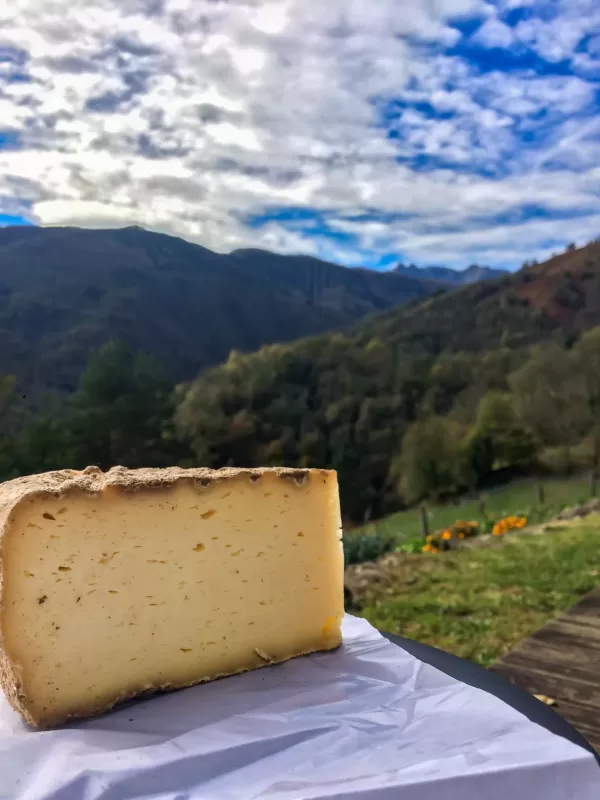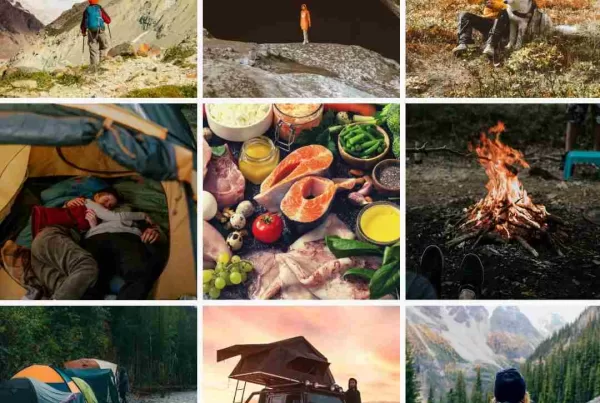This post may contain affiliate links, which means I’ll receive a commission if you purchase through my links, at no extra cost to you. Please read my full disclosure here.
Introduction:
After a long hike, there is nothing like a good piece of cheese to take away that pang of hunger before you begin dinner. What are the best cheeses for backpacking? What should you avoid? Your quest is complete! Whether you’re tackling the Appalachian Trail or embarking on shorter outdoor trips, hard cheese is a versatile, protein-rich fuel source for those demanding hikes..
With a plethora of cheese types each bringing unique flavor and nutritional value, choosing the best cheese for backpacking extends beyond taste to practical aspects like shelf life, weight, and pairings.
So, what constitutes the best hard cheese for backpacking?
A cheese with a long shelf life that can endure room temperature is vital when you’re far from a grocery store.
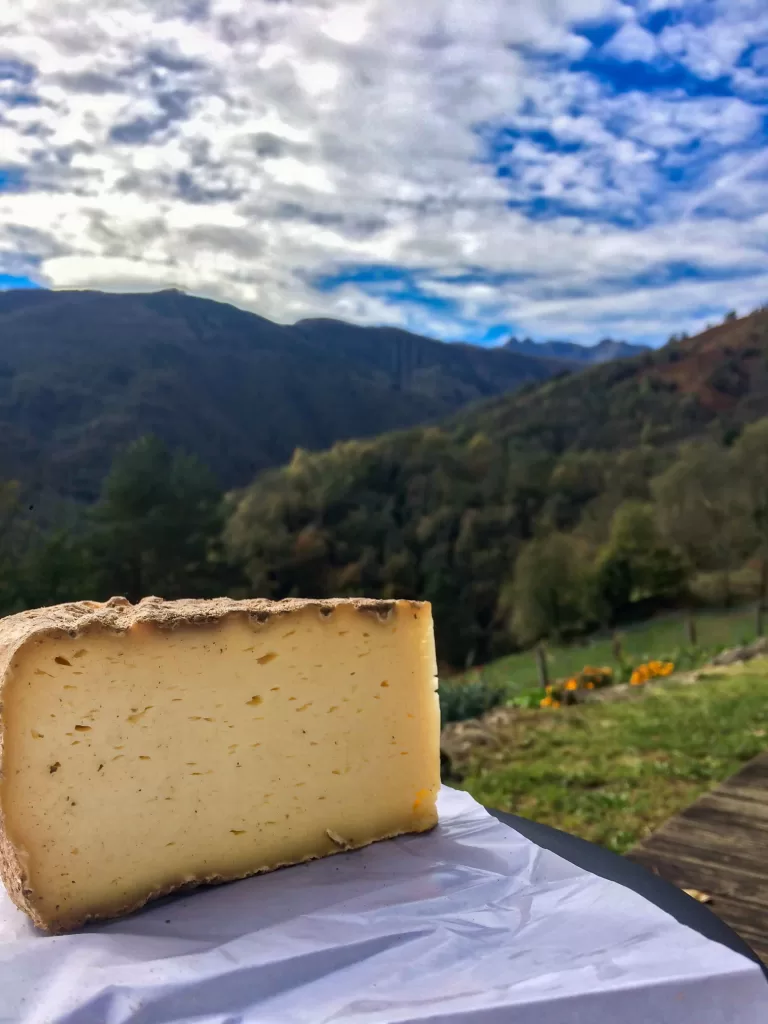
Weight is equally important; a lightweight cheese makes for an easier carry.
And flavor matters; a cheese that’s delightful solo and pairs well with the best meats for backpacking can elevate your food choices into memorable backpacking meals.
Imagine ending a strenuous day on the trail with a piece of the best cheese, savored with trail mix or dried fruit, a simple luxury enhancing your outdoor adventure.
This article aims to guide you through selecting the best hard cheese for backpacking, considering all these crucial factors.
By the end, you’ll be prepared to choose a cheese that meets your taste and needs, ensuring a superior culinary experience on your outdoor escapades.
Let’s explore the world of backpacking-friendly cheeses!
Table of Contents
Best Hard Cheese for Backpacking
1. Moon Cheese:
Does it get any harder than Moon Cheese? If you haven’t heard, this is a crunchy, dehydrated cheese snack available in multiple flavors. It’s made with 100% natural cheese and is a great source of protein and calcium.
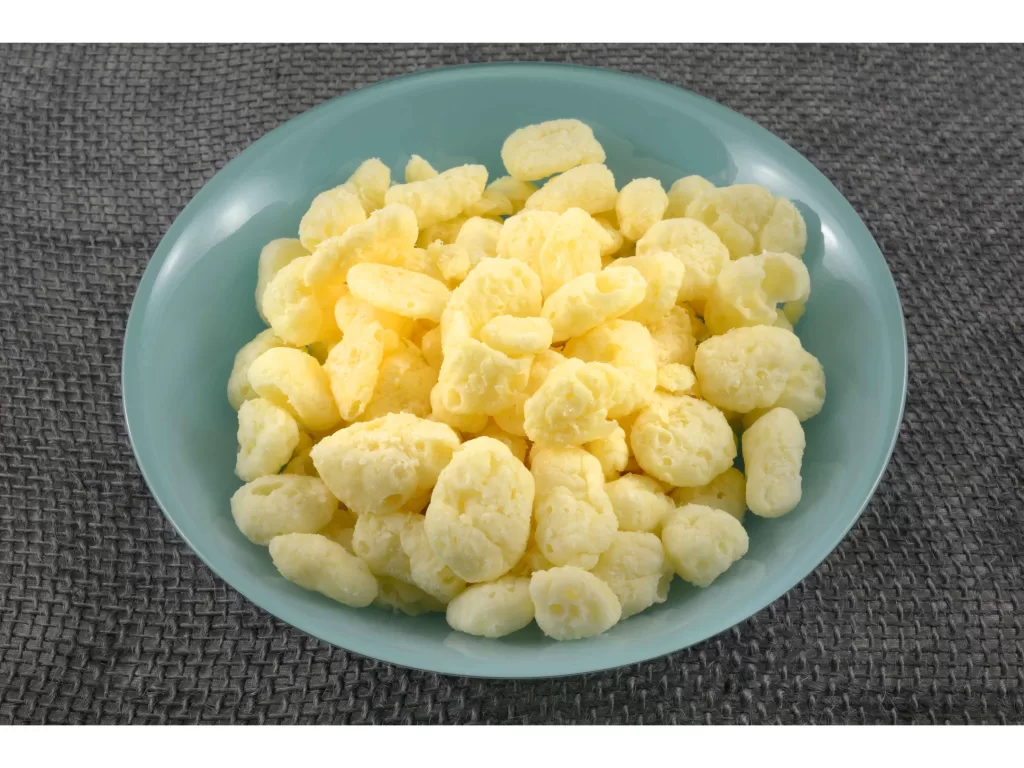
It lasts pretty much indefinitely and is extra light. It’s great in anything from trail mixes to springled in your meals for an added crunch!
2. Easy Cheese:
While I’m not sure we can really call this cheese, this is a canned cheese product that doesn’t require refrigeration. It’s a convenient and lightweight option for backpacking trips. You do have to pack-out the can though which can be a bit of a pain, and cheese lovers may scoff at bringing this on their next backpacking trip.
3. Parmigiano Reggiano:
Known as one of the world’s finest cheeses, this aged cheese has a long shelf life and a flavor that only improves with age. It can handle warm temperatures and is perfect parmesan cheese for grating over meals.
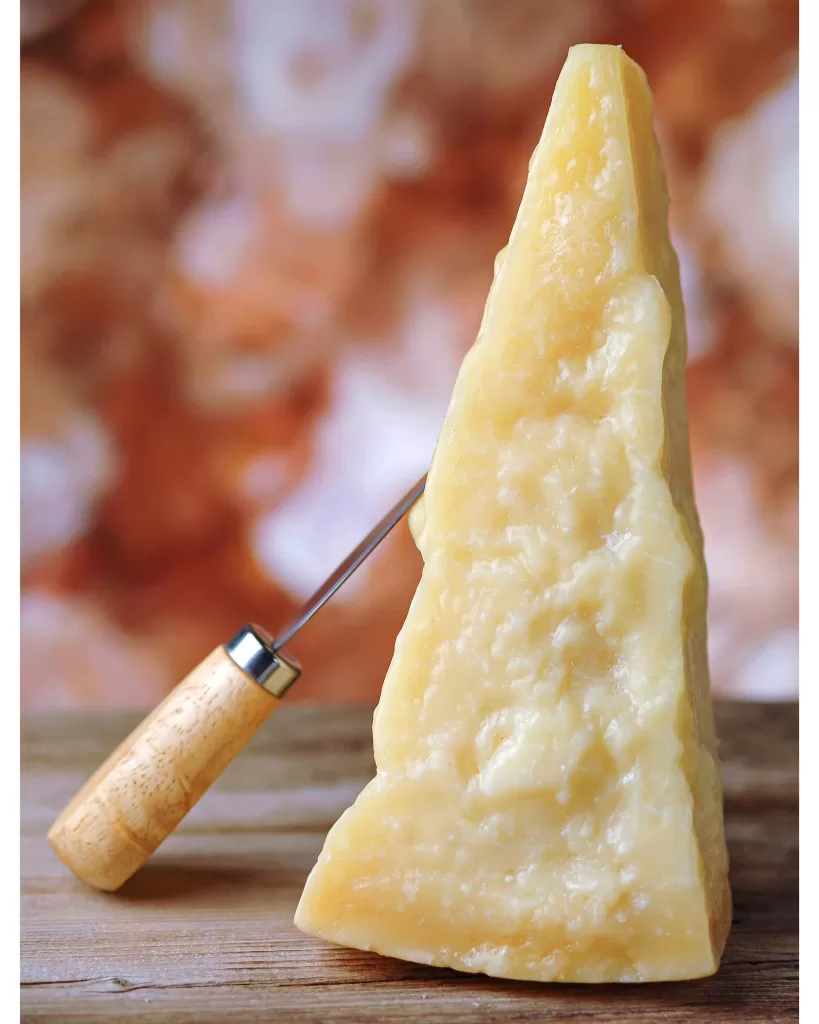
Its lower moisture content allows it to last a long time, making it the best option for longer hikes – enhancing your backpacking meals. In fact, you often find Parmigiano Reggiano in unrefrigerated spots of the grocery store.
4. Pecorino Romano:
This is a cow cheese similar to Parmigiano Reggiano. Pecorino Romano is a hard, salty Italian cheese that’s perfect for backpacking due to its long shelf life and ability to withstand warmer temperatures.
5. Gouda:
If properly waxed, Gouda can last several weeks without refrigeration. Of the aged hard cheeses, it’s a versatile cheese with a mild flavor that pairs well with a variety of foods.
With it’s firm texture and rich flavor, this is an ideal hard cheese for backpacking. I love to pair it with apples and some jerky but it can also be put into a backpacking meal for added flavor or eaten alone. Gouda comes in various flavors (like smoked!) so feel free to experiment.
6. Cheddar:
This kind of cheese has a bold flavor and a good shelf life, making it a good option for backpacking. Its versatility in pairings also makes it a popular choice.
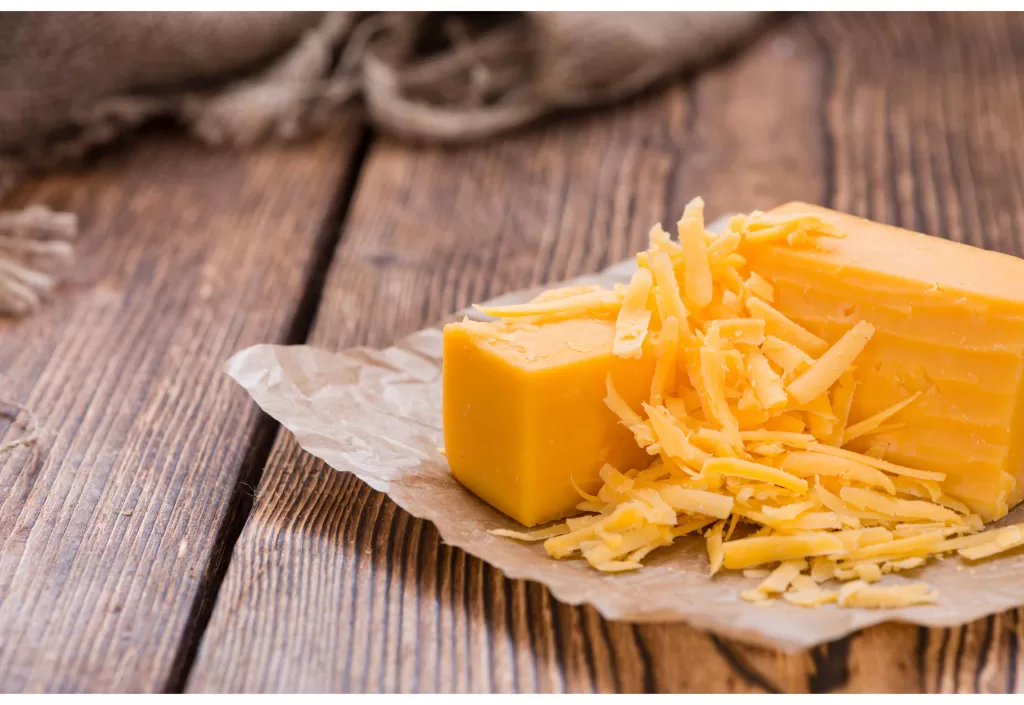
Additionally, cheddar cheese often comes in single-serve packets which are perfect for backpacking. Aged cheddar can be kept without refrigeration for a few days. Its rich and robust flavor makes it a favorite among backpackers.
7. Swiss Cheese:
Swiss cheese can last a couple of days at room temperature, and its light and nutty flavor is a great addition to any meal. Pack it in an airtight container or a zip-lock bag to maintain freshness.
8. American Cheese:
Believe it or not, processed cheeses like American cheese can last longer without refrigeration than other soft cheeses. So if you want a trail grilled cheese or quesadilla – go crazy!.
9. Dehydrated Cheese:
Dehydrated cheese (dry cheeses) can be made at home using a food dehydrator, or bought from outdoor stores. It’s lightweight and can be rehydrated on the trail, making it a great choice for backpacking.
They are often the best option for long periods of backpacking due to their lower moisture content. They’re some of the best hard cheese for backpacking.
10. Manchego:
This semi-hard Spanish cheese has a rich, nutty taste that will satisfy your palette on the trail. Its robust flavor and texture last well in backpacking conditions, making it a great addition to your next outdoor adventure.
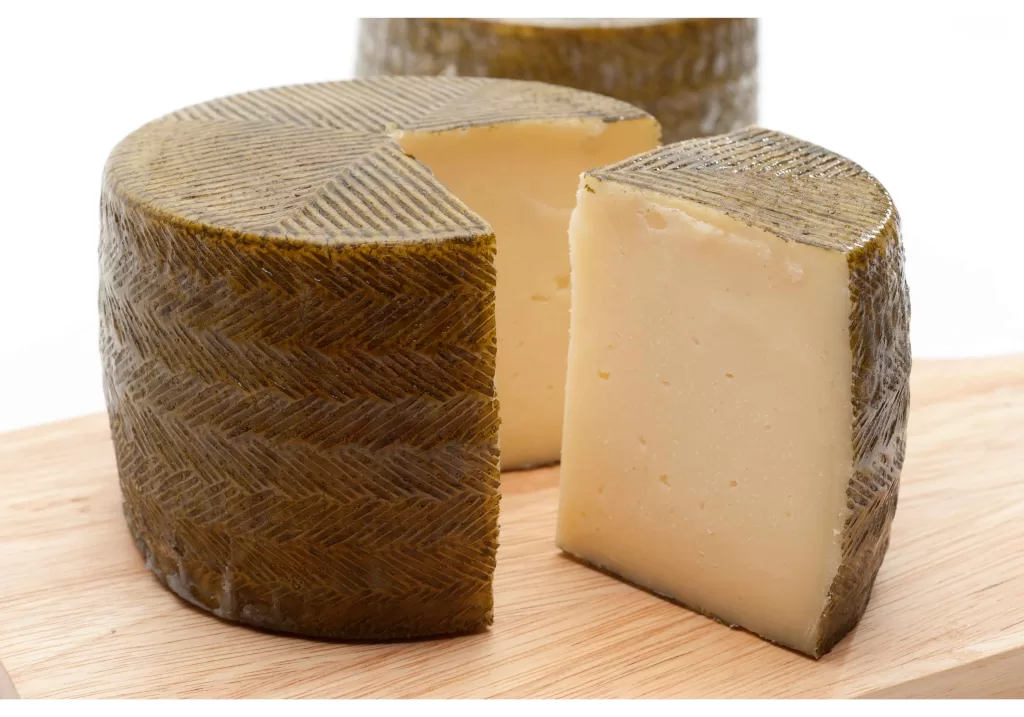
11. Asiago (aged):
Asiago cheese has a slightly sweet and nutty flavor. When aged, it becomes firm and flavorful, which is excellent for grating on trail meals.
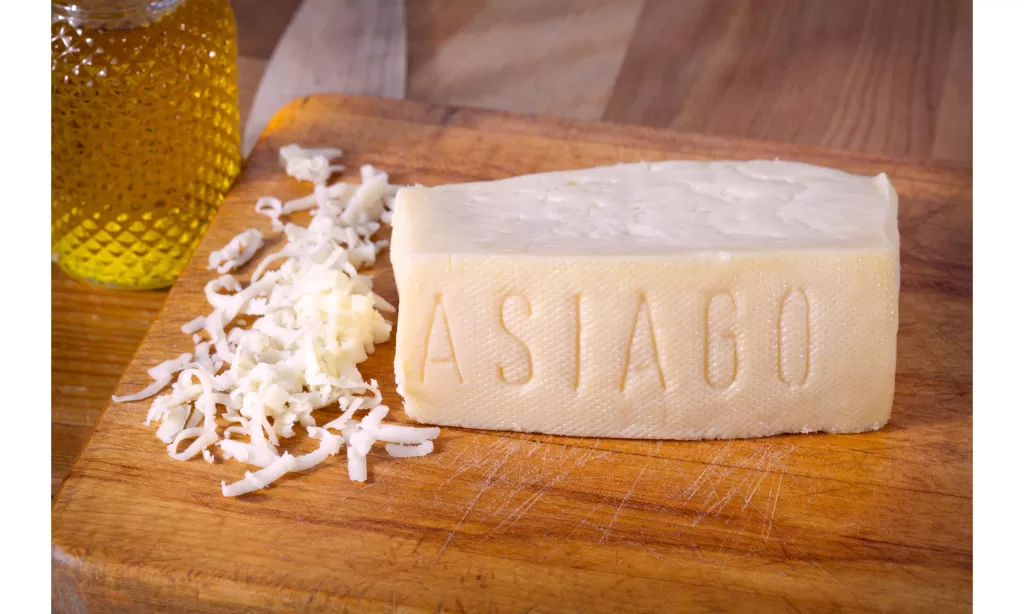
Hard Cheese Conclusion:
You can find these harder cheeses at local grocery stores, cheese mongers, or online. Remember, even though this type of cheese (firm cheese) can handle warmer temperatures, they should still be consumed within a certain timeframe to ensure they’re safe to eat.
Soft Cheeses for Backpacking
As a general rule, according to the US Department of Agriculture, “Soft cheeses such as cream cheese, cottage cheese, shredded cheeses, and goat cheese must be refrigerated for safety.” As such, if you choose to bring a softer cheese onto the trail, I’d eat it early on in the journey.
It can be a great addition to a first lunch or dinner and you can freeze cheese to keep it colder longer in your bag.
12. Laughing Cow:
This cheese comes in individual packets, making it easy to portion and pack. Its creamy texture and mild flavor make it a versatile option for backpacking meals or day hike lunches. It’s great on a baguette.
13. Babybel:
Babybel is a semi-soft cheese. According to Babybel, thanks to its protective shell, it may be stored unrefrigerated at room temperature of 20 degrees Celsius for several hours, such as in your lunchbox.

That protection comes in the form of a wax coating, making it more resistant to warmer temperatures. It’s compact and comes in various flavors, perfect for adding some variety to your meals on the trail.
14. String Cheese:
Perfect for snacking during a hike, string cheese is a convenient option. It’s wrapped up airtight and will be okay for an early on snack in your journey.
15. Brie:
While brie is typically seen as a luxury cheese, single-serving packages of this soft, creamy cheese with a mild taste can be a fun treat on the trail.
Brie is one of my favorite fresh cheeses, despite it’s extra cost. Pair it with a baguette and some dried fruit for a trail-side charcuterie experience. Don’t bring a whole thing of brie though – it will turn into a mess. Only single serve packets.
For charcuterie, check out the best meats for backpacking list.
Best Vegan Cheeses for Backpacking
16. Nutritional Yeast:
While not a cheese per se, nutritional yeast “nooch” is a staple in many vegan diets. It has a cheesy flavor and is lightweight, making it an ideal option for backpackers looking to add a cheesiness to a low-fat spread. It can be sprinkled on almost any food for an added boost of flavor and nutrition.
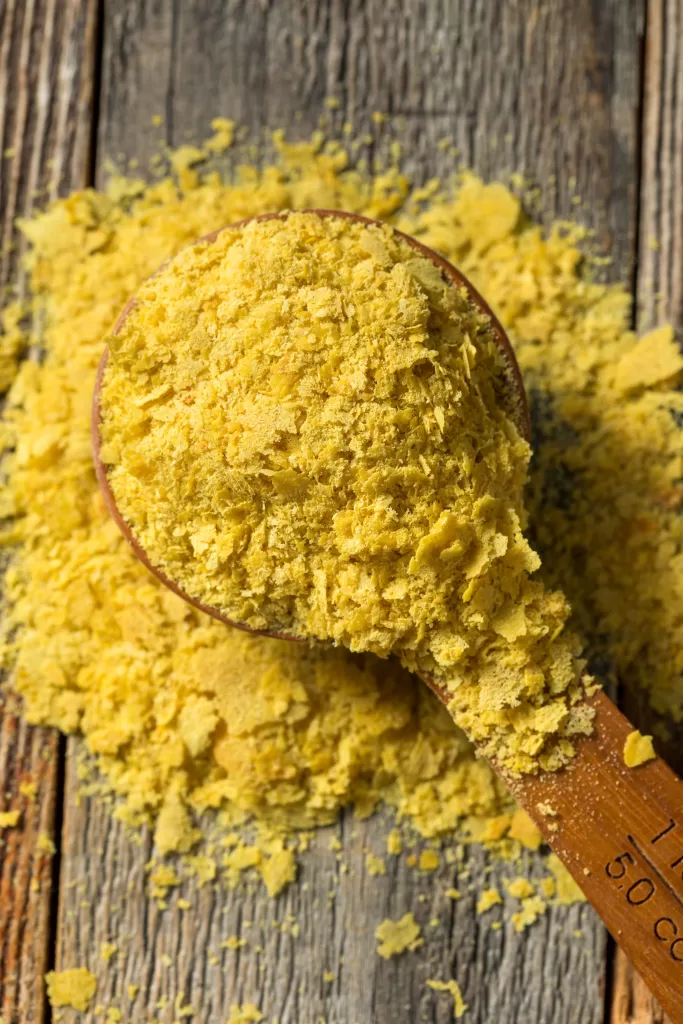
17. Vegan Cheese Spreads:
Vegan cheese spreads, such as those made by Treeline or WayFare, can be a good option. They’re made from a variety of plant foods like nuts and seeds, which are high in protein and healthy fats. Some can be stored at room temperature until opened.
18. Vegan Cheese Slices or Blocks:
There are vegan cheese slices available that are individually wrapped and do not require refrigeration until opened, such as those from Follow Your Heart or Violife (my favorite is the smoked cheddar ones).
19. DIY Dehydrated Vegan Cheese:
For the more adventurous, you can make your own dehydrated vegan cheese at home using ingredients like cashews, nutritional yeast, and various spices. This option is lightweight and can be rehydrated on the trail with a little water.
Worst Cheese for Backpacking:
There are certain types of cheese that are less suitable for backpacking due to various reasons such as their need for refrigeration, potential for messiness, or faster spoilage. Here are a few examples:
1. Camembert:
These soft, creamy cheeses are delightful on a cheese board, but not ideal for backpacking. They require refrigeration to maintain their texture and flavor, and can easily become runny and messy in warm weather.
2. Blue Cheeses (like Gorgonzola or Roquefort):
Blue cheese is prone to spoilage at higher temperatures. Their strong odor can become more pronounced as well, which may not be desirable in a confined space like a backpack on a hot day. But in colder temperatures, it can be good fuel for short trips like day hikes.
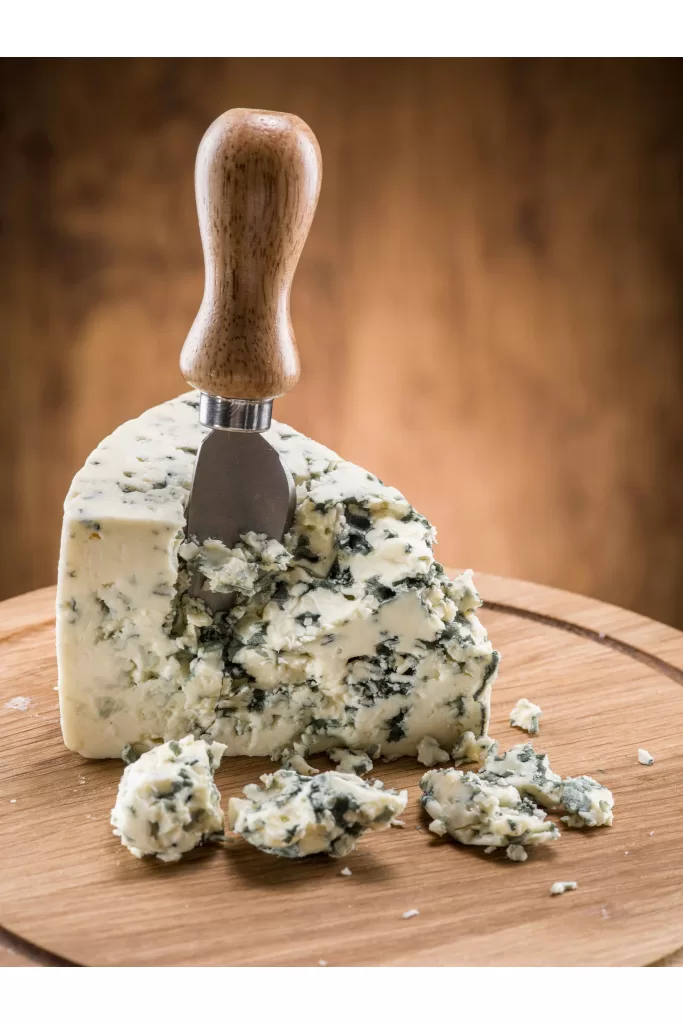
3. Mozzarella:
Fresh mozzarella has a high moisture content and requires refrigeration. It can spoil quickly in warmer temperatures, making it less suitable for longer hikes.
4. Ricotta Cheese and Cottage Cheese:
These cheeses require refrigeration and can spoil quickly without it. Unless you’re planning to consume them within the first day, they are best avoided.
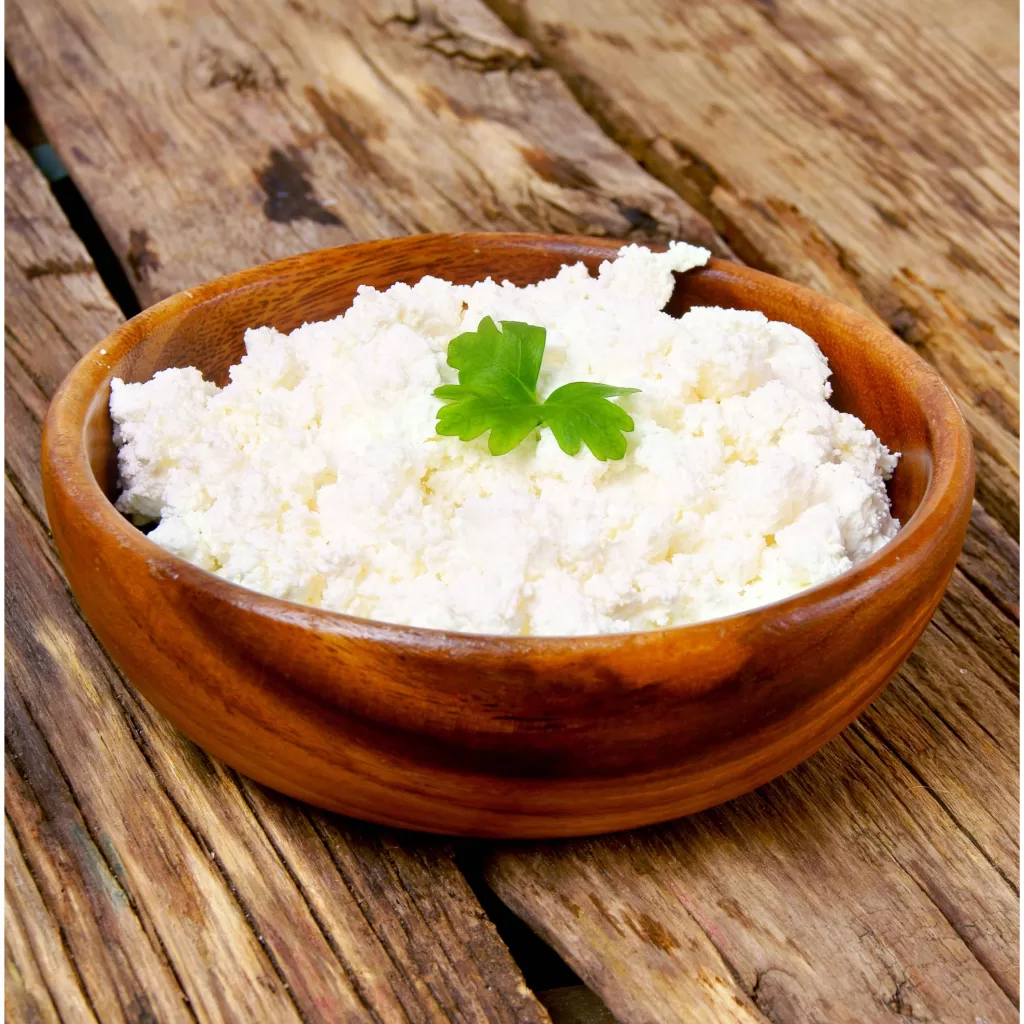
5. Cream Cheeses:
I know cream cheese is above as well, but while some cream cheeses come in individual packets that may last a day or two without refrigeration, most types spoil quite quickly when not kept cool.
6. Feta:
This cheese is often sold in brine to maintain its texture and freshness, making it unsuitable for backpacking as it requires refrigeration and can become messy. Dry feta crumbles would probably be okay for short hikes.
7. Cheeses with Fruit or Vegetable Additives:
Cheeses that contain additions like fruits, vegetables, or other flavorings can spoil faster than plain cheeses, so they should be avoided on longer trips.
8. Sour Cream
It’s not a cheese but I feel like it should be said. Sour Cream doesn’t fair well for long periods outside of the fridge. Just don’t do it. It needs to be kept at lower temperatures.

Cheese to Avoid Conclusion
In general, for backpacking, it’s best to stick with hard, aged cheeses, or specially packaged cheeses that are designed to be shelf-stable. Always be mindful of the temperature and length of your trip, as these factors greatly impact how well your cheese will fare.
Backpacking Cheese Pairings
1. Apples:
The sweetness of apple slices pairs well with the sharpness of cheddar or the creamy, mellow tastes of a soft cheese for backpacking.
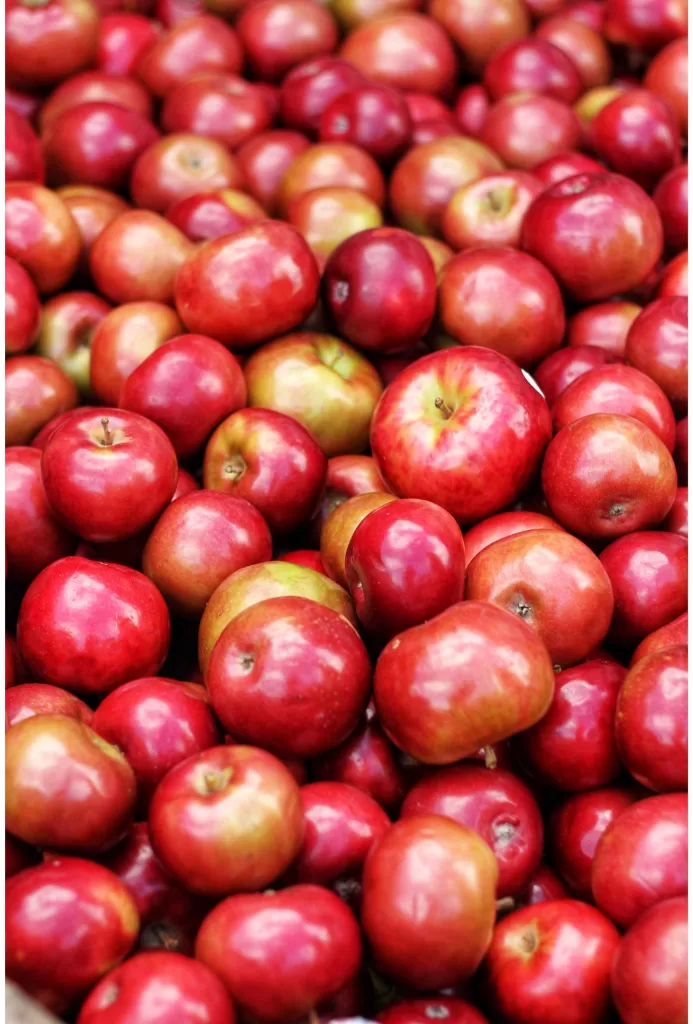
Apples are robust, carrying well on the trail, and their crispness provides a pleasant contrast to the rich, fat content of cheese. They’re best consumed earlier in the trip due to their water weight.
2. Hot Sauce:
Spice up your trail meals by adding hot sauce to a spicy Monterey Jack or even a semi-soft cheese for backpacking. The heat from the sauce complements the cheese’s creaminess, creating a burst of flavor that can be a welcome change from typical trail food.
3. Black Pepper:
Something as simple as black pepper can greatly enhance any cheese, especially the best hard cheese for backpacking. It adds a layer of complexity to the flavor profile and can turn a simple cheese and cracker meal into a memorable culinary experience.
4. Beef Jerky:
Pair the saltiness of beef jerky with a nutty Gouda or a robust cheddar to create a mouth-watering, protein-packed snack.
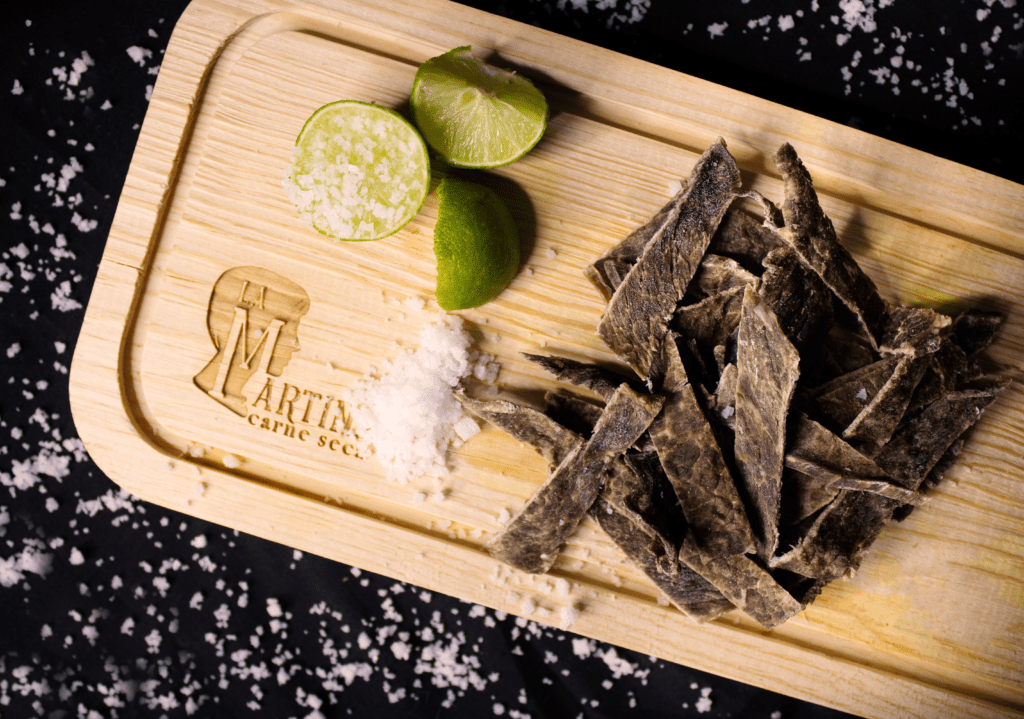
5. Peanut Butter:
Try combining peanut butter with a semi-hard cheese for backpacking. The sweetness of the peanut butter can balance out the savory, umami flavors of the cheese.
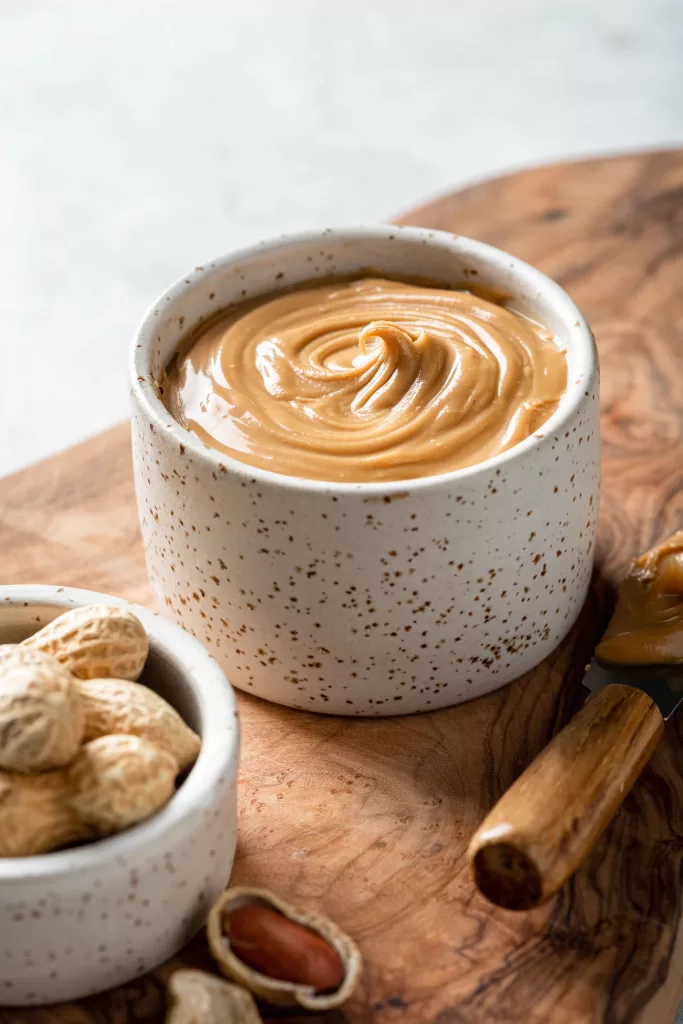
6. Instant Rice:
A sprinkle of dehydrated cheese can greatly enhance a simple instant rice meal. This combination is easy to carry on a backpacking trip and provides a satisfying, energy-boosting meal.
7. Ramen Noodles:
Much like instant rice, ramen noodles can be elevated with the addition of a little cheese, creating a comforting and satisfying dish after a long day of hiking.
8. Freeze-Dried Meals:
Add a sprinkle of dehydrated cheese to your freeze-dried meals for an extra flavor boost and calorie addition. This can be particularly beneficial for those hard hikes.
9. Pancake Mix:
Adding a little cheese to your pancake mix can turn your morning breakfast into a savory treat. This pairs wonderfully with a semi-soft cheese for backpacking.
10. Crackers:
Cheese and crackers IS A CLASSIC. It offers a simple yet satisfying go-to for backpacking meals or snacks.

This combination works well with any type of cheese, from the best hard cheese for backpacking to softer alternatives.
11. Trail Mix:
If you’re a fan of snack foods, consider pairing your cheese with trail mix. The varied textures and flavors can make for a quick, high-energy meal.
12. Pork Rinds:
These can be a surprisingly good pairing with cheese, providing a crunchy, salty component that contrasts nicely with the creamy texture of cheese.
13. Instant Oatmeal:
Adding a bit of cheese to your instant oatmeal can create a unique flavor combination that’s also a great start to your hiking day.
14. Bread:
For those who prefer a more traditional approach, cheese pairs wonderfully with bread. This is a simple yet satisfying option for backpacking meals.
15. Summer Sausage:
For additional calorically dense food ideas, your best bet is to pair your cheese with things like olive oil or summer sausage. These combinations can provide the extra calories needed for those hard hikes.
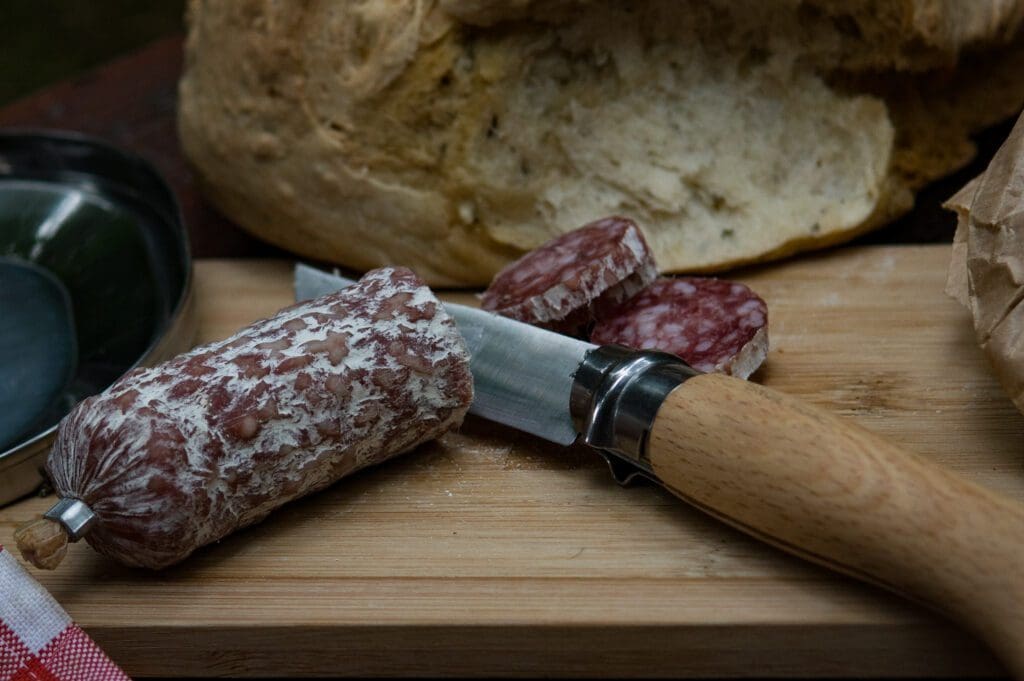
16. Chili Powder:
Even without bringing fresh foods, you can add a great way to kick up the flavor of your favorite meals with chili powder. It pairs wonderfully with a spicy Monterey Jack or a robust, best hard cheese for backpacking.
Just a sprinkle can take your cheese from simple to sizzling, making it a must-have spice on your backpacking trip.
Pairings Conclusion
Remember, whether it’s hard, soft, semi-soft, or semi-hard cheese, or even dehydrated or canned options, the best cheese for backpacking is the one that complements your other food items and satisfies your taste buds after a long day of hard hiking. Enjoy the wilderness, and bon appétit!
Weight Considerations – Best Cheese for Backpacking
When planning a backpacking trip, weight considerations are paramount. Each item you bring along contributes to the load you’ll be carrying, including the food you pack. Selecting lightweight, calorie-dense foods is essential, and cheese, fits the bill perfectly.
The weight of cheese is primarily determined by its moisture content, which is reduced through the aging process.
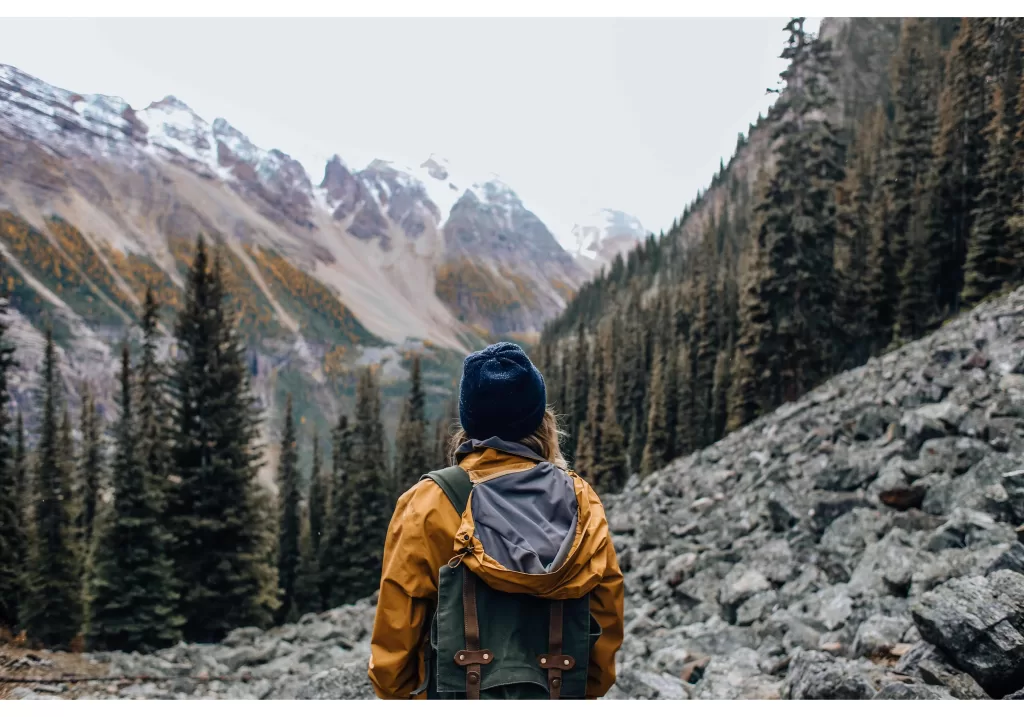
Hard cheeses are aged for longer periods, which results in less moisture and, consequently, less weight.
This makes them a perfect choice for those looking to minimize their pack’s weight without compromising on taste or nutrition.
Interestingly, despite their lighter weight, hard cheeses often pack a higher calorie punch. This is because the aging process also concentrates the cheese’s flavor and caloric content.
In essence, a small amount of hard cheese can provide the same number of calories as a larger quantity of softer cheese, meaning you don’t need to bring as much food to meet your energy needs.
When comparing the weight and calorie content of various types of cheese, hard cheeses like Parmigiano-Reggiano, Pecorino Romano, and aged Gouda typically provide the best calorie-to-weight ratio.

For instance, a one-ounce serving of Parmigiano-Reggiano contains approximately 110 calories, while the same serving size of Brie, a soft cheese, contains around 95 calories.
However, due to its lower moisture content, the hard cheese weighs significantly less, making it a more efficient choice for backpacking.
When choosing the best hard cheese for backpacking, it’s important to consider both the weight and the calorie content of the cheese.
Hard cheeses, due to their aging process and concentrated caloric content, tend to be the best choice for those looking to optimize their pack weight while ensuring they have a high-energy, satisfying snack on the trail.
Shelf Life and Storage – Best Cheese for Backpacking
Understanding storage and shelf life is key when choosing the best cheese for backpacking. Not all cheeses are created equal when it comes to enduring the rigors of a backpacking trip, especially when dealing with varying temperatures and warm weather.
Opting for cheeses with a longer shelf life can make all the difference in maintaining freshness and flavor throughout your journey.
Hard cheeses typically have a longer shelf life compared to soft cheeses, making them an ideal backpacking food. Less surface area exposed to air also helps in maintaining their quality.
In hot weather or warmer weather, the best hard cheese for backpacking should be able to endure without refrigeration.
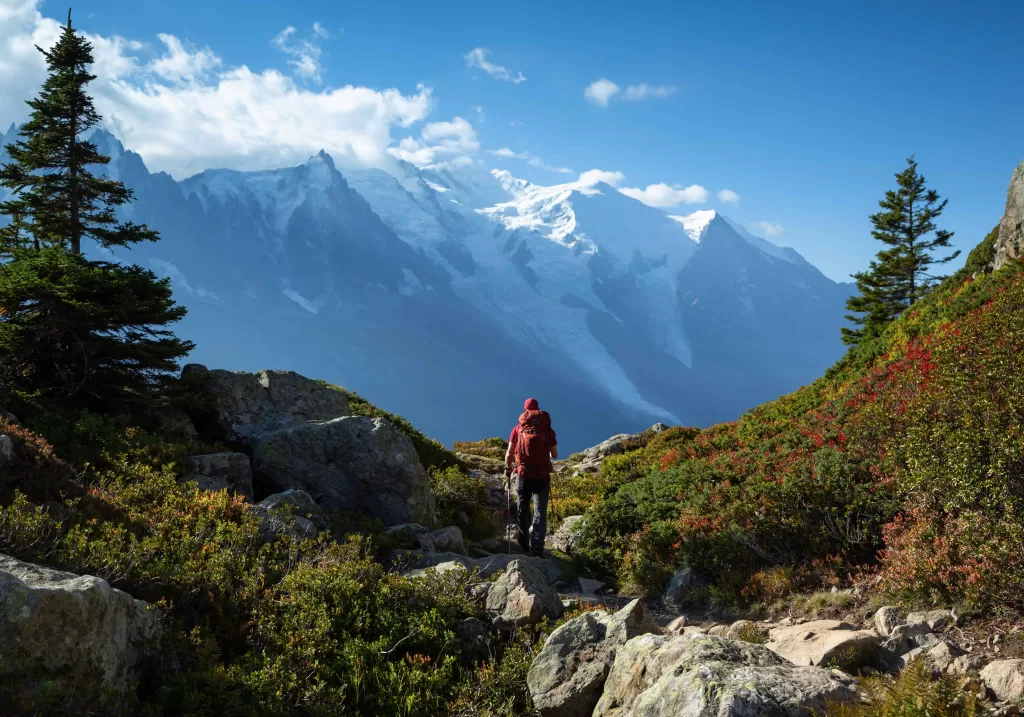
Proper packaging is essential to store cheese effectively during your next camping trip. If you buy cheese in its original packaging, it’s best to keep it that way until it’s time to eat.
Once opened, wrapping the cheese in parchment paper before placing it in a plastic bag or plastic wrap can help preserve its flavor and texture.
In case you are dealing with colder climates, an airtight container could also be beneficial to protect the cheese from moisture.
Individual packets of cheese can be a great option, too. They are not only convenient but also help minimize the cheese’s exposure to air, thus extending its shelf life.
Cold water can help keep cheese chilled but you need to be very careful, especially with soft cheeses, to avoid any food poisoning issues.
However, if soft cheese is a must-have on your list, selecting shelf-stable options would be the best way. These can withstand room temperature for a longer period, but once opened, they should be consumed within a few days.
When packing for warmer weather or humid weather, consider wrapping your cheese in wax paper, which allows it to breathe while protecting it from external elements. Be mindful of the cheese’s location in your pack, as placing it near a cold water bottle can help keep it cool during hikes.
A little planning goes a long way when it comes to storing and packing the best cheese for backpacking. By understanding the different types of cheeses and their respective storage needs, you’ll be well-equipped to enjoy a variety of delicious cheeses on your outdoor adventure.
Conclusion:
finding the best hard cheese for backpacking can greatly enhance your outdoor adventures, adding both flavor and nutritional value to your meals.
By considering factors such as shelf life, weight, and flavor, as well as potential pairings, you can elevate your backpacking cuisine from merely sustenance to a truly enjoyable part of your trip.
Remember, the best hard cheese for backpacking is subjective and depends on your personal preferences and dietary needs.
Whether it’s the sharp bite of an aged Cheddar, the nutty complexity of a Parmigiano-Reggiano, or the creamy mildness of a young Gouda, your choice of cheese can make all the difference.
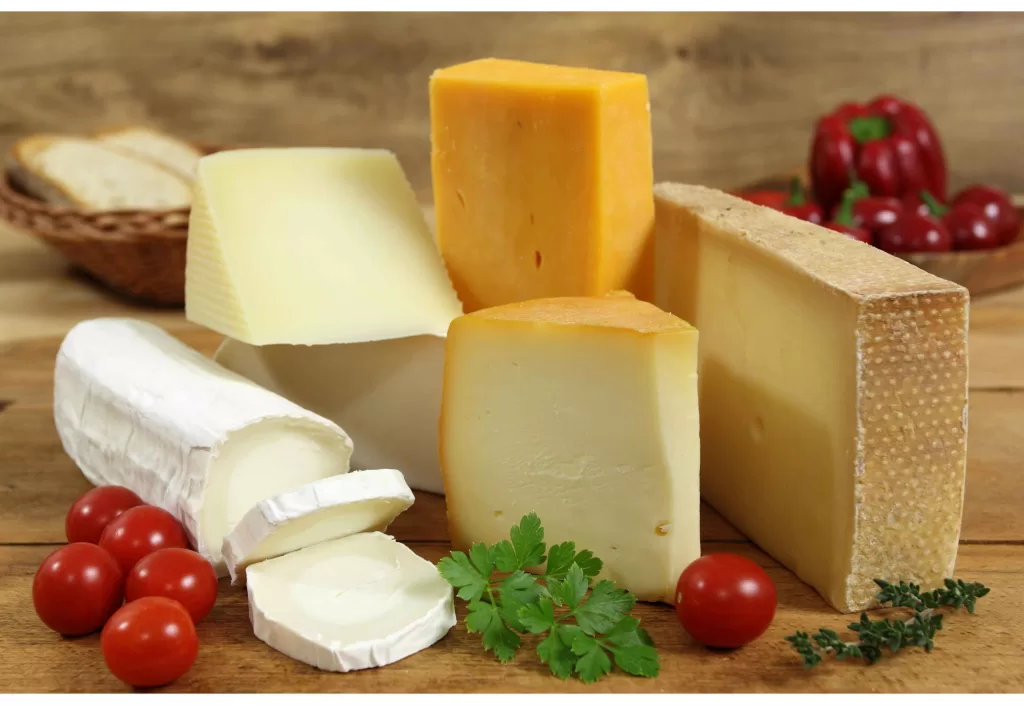
Finally, don’t forget about the other types of cheese that can be excellent choices for your trip.
While the best hard cheese for backpacking often takes the spotlight, semi-hard, semi-soft, and even some soft cheeses can also be fantastic options, offering a wider range of flavors and textures to enjoy.
So, the next time you plan your backpacking trip, don’t underestimate the power of the humble cheese. Armed with this guide, you’re well on your way to discovering the best hard cheese for backpacking that will not only fuel your journey but also delight your taste buds.
Happy trails and bon appétit!
